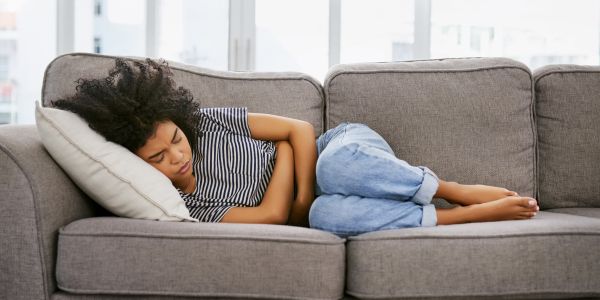The loss of menstruation or a period for a female at any age can be a jarring experience.
Amenorrhea is the medical condition defined as the absence of menstruation during reproductive years. Primary amenorrhea occurs when a girl doesn’t start her period by age 15, while secondary amenorrhea happens when a regularly menstruating woman misses three or more periods in a row.
Amenorrhea can be the result of multiple factors, and women can experience it either naturally or unnaturally. As a woman ages, we know that she may potentially have more episodes of amenorrhea as she reaches menopause. Pregnancy and breastfeeding can result in naturally missed periods, as well.
Hormones are the driving force behind the menstrual cycle, so when the levels are changed, unnatural amenorrhea can occur. Some factors that could drive hormonal changes that could result in amenorrhea include:
• Contraceptives: the hormones in contraceptives (progestin and estrogen) prevent ovulation and implantation. Birth control impacts the uterine lining, which can lead to changes in bleeding.
• Medications: antipsychotics, chemotherapy, antidepressants, blood pressure medications and even some allergy medications can affect the menstrual cycle.
• Lifestyle: stress, over-exercise, low body weight or poor diet can impact the hormone levels that help facilitate a normal menstrual cycle.
• Structural deficiencies of reproductive organs such as uterine scarring, an additional membrane or wall in the vagina that blocks blood flow and lack of reproductive organs that never formed in the womb.
Other symptoms that can help diagnose amenorrhea include:
• Milky nipple discharge
• Hair loss
• Headache
• Vision changes
• Excess facial hair
• Pelvic pain
• Acne
Grace Derocha, registered dietitian and certified diabetes educator for Blue Cross Blue Shield of Michigan, said she experienced amenorrhea in her early teenage years due to over-exercise.
Derocha was a dedicated dancer who spent six to seven days a week in the studio perfecting her technique. Despite eating healthy foods, the excessive physical activity caused her cycle to become irregular. She also experienced extended spotting between periods and hair loss. Birth control was prescribed to Derocha in her late teens to clear her skin, which ultimately regulated her menstrual cycle.
The possibility of developing amenorrhea is higher for women who are extremely active, have a family history of amenorrhea or are dealing with an eating disorder. Derocha said If your daughter is experiencing amenorrhea, check for signs of an eating disorder or a deeper medical complication, such as PCOS.
A tip to spot amenorrhea early on is to keep track of your menstrual cycle. You can write it down on a calendar or keep track via apps on your phone. Some helpful apps are Period Tracker, Glow, Flo and Magic Girl. While not experiencing symptoms of PMS and bleeding once a month may sound nice in the short term, there are long-term effects of amenorrhea, such as infertility and osteoporosis, so consult with your doctor if you notice anything amiss with your menstrual cycle.
If you found this post helpful, you might also like:
- How to Treat PMS Symptoms with Food
- 5 Signs Your Healthy Living Obsessions is Unhealthy
- Dietary Tweaks to Consider as You Enter Menopause








